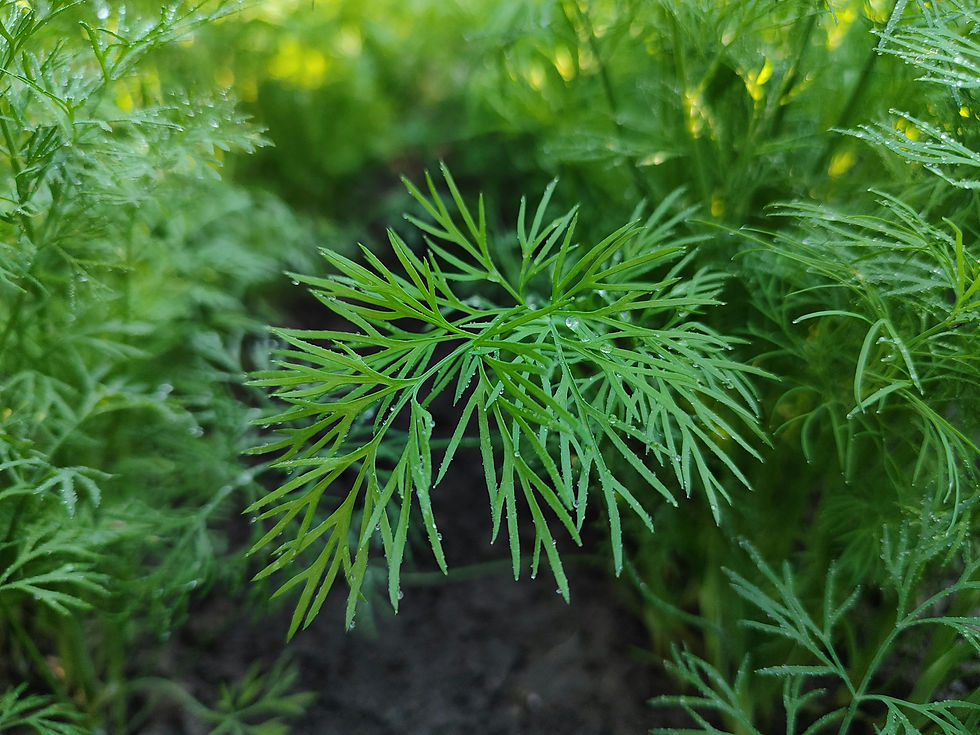Unleashing the Power of Citronella: Your Complete Guide to Growing and Protecting with Nature's Mosquito Repellent
- Wencel Urboda

- Apr 18, 2024
- 6 min read
The Citronella plant, scientifically known as Cymbopogon nardus or Cymbopogon winterianus, is a fragrant and versatile herb renowned for its natural insect-repelling properties. Originating from Southeast Asia, this perennial grass belongs to the Lemongrass family and is prized for its lemony scent, which is derived from its high citronella oil content.
Growing up to 5 to 6 feet tall in optimal conditions, the Citronella plant features long, slender leaves with a distinctive grassy texture and a vibrant green hue. When crushed or bruised, these leaves release a potent citrus fragrance that acts as a deterrent to mosquitoes and other biting insects, making it a popular choice for natural insect repellents and outdoor gardens.
Some benefits of Citronella We have Citronella oil it has been used in traditional medicine for its potential health benefits. It is believed to possess antimicrobial properties and has been used topically to soothe skin irritation.
Varieties of Citronella
5 most common type of Citronella
Citronella Grass (Cymbopogon nardus): Also known as "Lemongrass" or "Tanglad" in the Philippines, Citronella Grass is a tall, perennial grass that is widely cultivated for its citronella oil, which is used in insect repellents and fragrances.
Citronella Scented Geranium (Pelargonium citrosum): This variety of scented geranium, also known as "Citrosa Geranium" or "Mosquito Plant," emits a lemony scent that is believed to repel mosquitoes. It is commonly grown in pots or hanging baskets in the Philippines.
Citronella Balm (Pelargonium crispum): Another species of scented geranium, Citronella Balm, has a lemony fragrance similar to Citronella Scented Geranium. It is often grown for its ornamental foliage and mosquito-repelling properties.
Citronella Orchid (Coelogyne pandurata): While not as commonly cultivated as other varieties, Citronella Orchid is a native species found in the Philippines. It features large, fragrant flowers with a citrusy scent, which some people believe may help repel insects.
Citronella Basil (Ocimum citriodorum): Citronella Basil, also known as "Lemon Basil," is a culinary herb with a strong lemon aroma. While it may not be as effective at repelling mosquitoes as other varieties, it is still grown for its aromatic foliage and culinary uses.
Climate and Growing Conditions
Citronella plants thrive in warm and humid climates. They are typically grown in tropical or subtropical regions where temperatures remain above 50°F (10°C) year-round. In the Philippines, where the climate is predominantly tropical, citronella plants can be grown successfully.
Citronella plants require plenty of sunlight to grow and thrive. They prefer full sun, which means they should receive at least 6 to 8 hours of direct sunlight per day. In areas with extremely hot temperatures, some partial shade during the hottest part of the day may be beneficial.
This plant prefer slightly acidic to neutral soil with a pH range of 5.5 to 7.0. Conduct a soil test to determine the pH of your soil and make adjustments as needed using organic amendments or pH-adjusting products.
Planting Citronella
Select a location in your garden or pot that receives full sunlight for at least 6 to 8 hours a day. Citronella plants thrive in sunny conditions. Ensure the chosen location has good air circulation to prevent fungal diseases and promote healthy growth. Consider planting citronella near outdoor seating areas, patios, or windows to take advantage of its mosquito-repelling properties.
Start by testing the soil pH using a soil testing kit. Citronella plants prefer slightly acidic to neutral soil with a pH range of 5.5 to 7.0. Amend the soil as needed to improve drainage and fertility. If the soil is heavy or compacted, mix in organic matter such as compost, well-rotted manure, or peat moss to improve soil structure.
Start seeds indoors 6 to 8 weeks before the last frost date or sow them directly into the garden after the danger of frost has passed. Plant seeds 1/4 inch deep in well-draining soil and keep them consistently moist until germination occurs.
Citronella plants can be grown from seeds, but they can be slow to germinate and may take several weeks to establish. Start seeds indoors 6 to 8 weeks before the last frost date or sow them directly into the garden after the danger of frost has passed.
Take 4-6 inch stem cuttings from healthy, established plants, making sure each cutting has several nodes. Remove the lower leaves from the cutting and dip the cut end in rooting hormone to encourage root development.
Citronella plants can also be propagated by dividing mature plants. Dig up the plant and carefully separate the clumps into smaller sections, making sure each division has its roots and stems
Planting Process
Prepare the soil in the chosen location by amending it with compost or well-rotted organic matter to improve drainage and fertility.
Dig a hole slightly larger than the root ball of the citronella plant.
Remove the citronella plant from its container and gently loosen the roots if they are pot-bound.
Place the plant in the center of the hole and backfill with soil, making sure the top of the root ball is level with the surrounding soil surface.
Tamp down the soil gently around the plant to remove any air pockets.
Water the newly planted citronella thoroughly to help settle the soil and encourage root establishment.
Mulch around the base of the plant with organic mulch, such as wood chips or straw, to help retain moisture and suppress weeds
Space citronella plants approximately 18 to 24 inches apart to allow for proper air circulation and to prevent overcrowding. If planting in pots or containers, choose a container that is at least 12 inches in diameter to provide enough space for root development.
Keep the soil consistently moist but not waterlogged, especially during the plant's establishment period. Water citronella plants deeply once or twice a week, depending on the weather and soil conditions. Water early in the morning or late in the afternoon to minimize evaporation and reduce the risk of fungal diseases.
Maintenance
Trim back any dead or damaged foliage regularly to promote new growth. Cut back the stems by one-third to one-half their length in early spring to encourage bushier growth. Remove any spent flower heads to redirect the plant's energy into new growth. Prune overcrowded areas to improve air circulation and reduce the risk of disease.
In fertilizing apply a balanced, slow-release fertilizer formulated for ornamental plants in early spring as new growth emerges. Repeat fertilizer application every 4-6 weeks during the growing season, following package instructions for dosage. Avoid over-fertilizing, as this can lead to excessive foliage growth at the expense of essential oils.
Monitor the plants regularly for signs of pests such as aphids, whiteflies, and spider mites. Use insecticidal soap or neem oil to control minor pest infestations.
Practice good garden hygiene by removing fallen leaves and debris to reduce the risk of fungal diseases.
Watch for signs of common diseases such as powdery mildew and leaf spot, and treat promptly with fungicides if necessary. Encourage beneficial insects such as ladybugs and lacewings to help control pest populations naturally.
Harvesting and Using Citronella
When and how to harvest citronella leaves
Citronella leaves can be harvested once the plant has become established and is producing healthy foliage, typically in the second year after planting. Wait until the plant has reached a mature size before harvesting to ensure a continuous supply of leaves throughout the growing season.
Use clean, sharp scissors or pruning shears to harvest citronella leaves.
Select mature leaves from the outer portion of the plant, as these are typically the oldest and most flavorful.
Cut the leaves close to the stem, leaving a small portion of the stem intact to encourage new growth.
Avoid harvesting more leaves than necessary to avoid weakening the plant.
Additional Tips:
Harvest citronella leaves in the morning when the essential oils are most concentrated for the best flavor and aroma. Avoid harvesting during the hottest part of the day to prevent wilting.
Tips for growing citronella in pots or containers
Choose a large container with drainage holes and fill it with well-draining potting mix. Place the container in a sunny spot, ensuring the plant gets at least 6-8 hours of sunlight daily. Water regularly, keeping the soil evenly moist but not waterlogged.
Fertilize every 4-6 weeks with a balanced liquid fertilizer. Trim the plant regularly to promote bushier growth and prune away any dead or damaged foliage. Monitor for pests and treat promptly if necessary.
Bring indoors before the first frost if you live in a cold climate. Repot every 1-2 years to prevent root bound. With proper care, your citronella plant will thrive in its container, providing you with its aromatic foliage and natural insect-repelling properties
What's the best way to use mosquito plants effectively to repel insects in my garden or outdoor space?
One effective way to use mosquito plants, such as citronella, to repel insects in your garden or outdoor space is to strategically place them in areas where you spend time outdoors, such as patios, seating areas, or near doorways and windows. This can help create a natural barrier against mosquitoes and other insects.
Additionally, consider crushing a few leaves to release their scent, which can enhance their insect-repelling properties. Citronella plants can also be used in conjunction with other natural repellents, such as candles or essential oil diffusers, to maximize their effectiveness.
Regularly pruning the plants to encourage the release of their aromatic oils can also help boost their insect-repelling capabilities.
Why wait any longer? Dive into the mosquito-free zone by planting your very own citronella today! Say goodbye to those pesky mosquito bites and hello to outdoor bliss!

































Comments